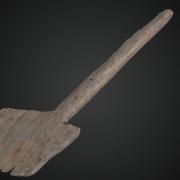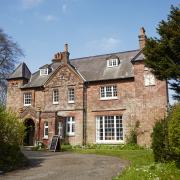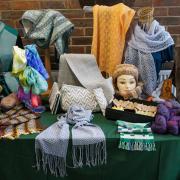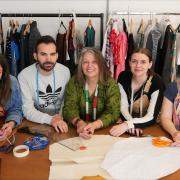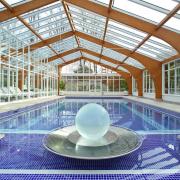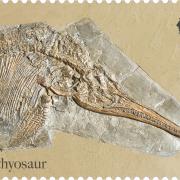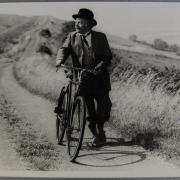In December 1943 the villagers of Tyneham left their homes believing that they would return after the war. Read poignant memories, recorded in the 1980s, from former residents of this Dorset ghost village.
Dorset has no shortage of places to arouse the inner poet, but few hit the spot quite like Tyneham with its effortless ability to lure the inspired into paroxysms of bucolic fantasy. Occupying an apparently idyllic spot between Lulworth and Kimmeridge, a mile from what is now called the Jurassic Coast, many describe Tyneham as 'lost', 'forgotten' or 'secret', but it's none of those. Nor is it 'The Village That Died For England' as the title of Patrick Wright’s otherwise authoritative 1995 (updated 2021) book declared.
To paraphrase the estimable Lynda Price who spent the best part of 15 years tirelessly enhancing, preserving and interpreting what remains of the village, Tyneham has evolved in different ways to once similar Purbeck villages. It is an enigma, a unique viewpoint from which to peer into a past that is now just beyond living memory.
Eighty years ago, on 19 December 1943 the last of its 225 residents including those of neighbouring Povington and Worbarrow, the surrounding farms, and the Elizabethan manor of Tyneham House - home to the aristocratic Bond family for 260 years - left for the final time. Requisitioned by the Army to train troops in the build-up to D-Day, Tyneham Valley has been retained as part of Lulworth gunnery range ever since, its residents unable to return.


By the time Tyneham's own D-Day arrived that cold December morning, over the previous months many had already set up home inland, often in newly built council houses with running water, electricity and indoor bathrooms. Nonetheless, as the final residents departed one of them pinned a note to the door of St Mary's Church. It read: ‘Please treat the church and houses with care. We have given up our homes, where many of us have lived for generations, to help win the war to keep men free. We shall return one day and thank you for treating the village kindly.’
And there hangs the conundrum. Depending on who tells Tyneham's tale, to some those 7,500 acres have come to symbolise the State riding rough shod over the individual; to others they contain the final resting place of feudal England; or the crucible of the Cold War consensus; or even a monument to laissez-faire environmental management.
A campaign spearheaded by the Tyneham Action Group in the late 1960s to restore the village to the people that once lived there took its cause to Parliament. Ultimately, they had to settle for greater public access. Since the 1970s the Ministry of Defence has opened range walks and maintained what remains of Tyneham's buildings, although not Tyneham House, which remained out of bounds, and was then dismantled and finally demolished.

Today, as the former residents who wanted to return lie at rest in the churchyard, Tyneham continues to inspire innumerable social media posts apparently longing to see it resettled. But by whom?
Some 35 years ago, as a student journalist, I went in search of that story in the company of three former residents, the last of those who lived there.
Let me introduce you to them...


Fred Knight was born in Museum Cottage in 1908. He had to leave Tyneham after his father Frederick, the last coachman at Tyneham House, was displaced by a motor car. Fred died in 1994, but his wonderfully evocative memoir, Tyneham Boyhood: The Rooks That Lived in the Elm Trees, published the same year, can still be found if you hunt hard enough.


Helen Taylor's family lived in Laundry Cottage; they did the washing for Tyneham House where she went to work as a seamstress. Beattie (from her middle name Beatrice) to those who knew her, Miss Taylor to the rest of us, was one of the last to leave Tyneham, aged 42. She died in 1999, but many of her stories found their way into Dr Andrew Norman's excellent 2007 book, Tyneham: A Tribute.


Arthur Grant, the son of the estate woodman, lived in Gwyle Cottage. He worked as a pantry boy at Tyneham House after the Bonds leased it to a South African doctor called Hans Sauer. His wife recommended Arthur to her brother, a Merchant Navy captain, and he joined the Union-Castle Line. Having enjoyed a second career as a photographer with a studio in Wareham, Arthur died in 2010.
Back in 1988, to invoke the Tyneham they knew as children, Fred and Arthur guided me around the remains of their village. Fred even secured access for one last look at his boyhood home.
The Evacuation

Tyneham was in decline long before its residents were told to leave. The village school closed in the mid 1930s, the few children needing education went to Corfe via bus. There were few opportunities for employment other than at Tyneham House. The tenant farmer had replaced most of his labourers with a tractor; no sheep had been kept locally for two years, so no shepherd was required; and the only fishermen still living at Worbarrow were in their eighties and nineties, too old to row a boat. Even the local rector, who was already in the Army, had left two years previously.
‘Well, I mean everybody had to go, though of course, they told us we could go back,’ said Miss Taylor. ‘Mrs Bond (at Tyneham House) was very good with organising everything and got people in their new homes as far as she could. We left fowl-houses and all that at Tyneham. We were hoping to go back, but they decided to keep it.’
By then, Fred and Arthur had both had left the village and found a wider world far beyond its confines. ‘Nobody wanted to come back,’ said Fred. ‘Why is it such a terrific number of people come here and have a look around? 'Tis because of what happened to Tyneham. It's been evacuated and now 'tis a forgotten village. An awful lot of people get an awful lot of pleasure coming to see this now.’
Arthur heard the news when on shore leave. ‘My parents moved just before the evacuation,’ he remembered. ‘Being young I didn't worry too much. I was happy when I went off to sea and saw all these mod cons.’ However, in recent years Arthur admitted that he had become very attached to the village. ‘Driving down this morning, it was rather upsetting.’
Village Life

It's easy to view Tyneham romantically as some kind of Arcadia, but life there was very different to what we know today. In some respects, it had remained unchanged for centuries with jobs and housing largely dependent on the landowner, low wages and few opportunities. Entertainment was homemade, as was a lot of the food and clothing, although most had what they needed and nearly all wanted for less than they would today. Village thrift clubs, for major expenses such as new boots for the children or coal, were augmented by the charitable efforts of the Bond family. At Christmas the village children were invited to tea at Tyneham House with presents around the tree.
‘We had concerts in the school in the wintertime, as well as whist drives and dances. The (Creech) Grange people, the Povington people, and those from Kimmeridge would come over. The old chaps would get up for the polka because it was only two scuffs here and two scuffs there,’ said Miss Taylor, who recalled her brother Bill (one of three killed in the First World War) playing the melodeon and teaching local lads to dance in the Laundry Cottage kitchen. ‘And my mother said: “Look, they must bring their slippers, I'm not having them wearing out my lino.” So, then they had to bring their slippers, these farm lads!’
Bill Taylor had left Tyneham in search of work and, accelerated by the First World War, over the next 20 years many others did likewise, including Fred Knight's family, first to Povington and then to Wareham: ‘When I left school I got a job with a master plumber, we used to do plumbing in various country houses including Tyneham House. I even had to ride a bicycle from Wareham to Tyneham to put a washer on the village tap once.’

Slightly younger than the others, Arthur also felt the pull of the modern world. ‘Village life revolved around the church, everyone was expected to go. Sunday School as well,’ he said. ‘We all looked up to the lord of the manor and then the rector, you had terrific respect for the clergy.’
A telephone kiosk was installed in the winter of 1929 to the horror of the local vicar Rev. Frend who considered it a 'modern monstrosity' and the work of the Devil. Its phone number was Kimmeridge 221. Within six months the village had four other telephones: Tyneham House (Kimmeridge 215), Tyneham Farm (Kimmeridge 217), the Post Office (Kimmeridge 219) and the Rectory (Kimmeridge 223)!


Arthur, who pointed out that the nearest policeman was at Lulworth, . ‘You seldom saw a copper down here,’ recalled one of the ways they made some extra pocket money. ‘Cars would come down and old Smith the farmer, used to collect a shilling a time (for parking). As kids, we would open the gates for the cars to come through and the people threw out a penny a time. We thought it was a great money maker!’
Not that there was much to spend it on. There was a little shop attached to the village Post Office and the grocer made a weekly visit from Corfe Castle, as did the butcher. Milk came from the Mintern family who kept a smallholding at Worbarrow and rented Rectory Fields to graze some of their cows locally. Twice a day he brought milk to the village in cans with a dipper. ‘The baker came about twice a week,’ said Fred. ‘The shoemaker, Billy Whiterow, once a month. He walked up from Kimmeridge with a sack on his back. That's why it's called Shoemaker's Lane.’
Fred's memories flooded back after he'd charmed the duty ranger to let us go up to see Museum Cottage.
‘Well, I probably won't see it again, but this is the cottage I was born. See that door; that was under the stairs. I used to go in there and shut meself in when it thundered. We didn't have this room furnished - nobody had stuff like they got now. My old man kept a few birds in here. I wonder what my parents would feel like if they could see it now...’


What if they had returned?
Photographs of Fred, Arthur and Miss Taylor, as well as their families and neighbours, grace the displays in the church and interpretation boards around the village. What would have become of Tyneham had it not been evacuated? Its one-time residents pondered the same.
‘I expect a lot of it would have been commercialised,’ said Miss Taylor, ‘but of course, Mr Bond was very strict on visitors. They had to park their cars at Tyneham and walk that mile to Worbarrow because he didn't want it congested. He didn't want them to put up ice cream things and all the rest, or tents, or caravans, oh no.’
Arthur mused that Tyneham might have gone the way of Kimmeridge, ‘I don't think it would have been caravan parks or lots of modern buildings, it would have been similar to Kimmeridge and kept its beauty.’ Fred had a more trenchant view: ‘It's a beautiful valley, but take Lulworth Cove, that's beautiful and there's more people living there now than there ever was in Tyneham.
‘If it hadn't been for the motor car and transport in general, television, wireless, pictures of all sorts... 'tis all someone making money or wanting to make money, that's what spoiled the lot. I believe Tyneham's better like it is now.’
A point, perhaps, more valid now than ever.

Visiting Tyneham
Tyneham village sits within the MOD Lulworth Range but is open most weekends, public holidays, spring break (end of May into early June) and summer break (end of July to September). Always check before setting off at gov.uk/government/publications/lulworth-access-times/ lulworth-range-walks-and-tyneham-village-access-times-2024. The church and school buildings are still intact and have exhibitions about the village and villagers. Parking and toilet facilities available. Dogs welcome.
Further reading...
Tyneham, A Lost Heritage by Lilian Bond (The Dovecote Press)
The Village That Died For England by Patrick Wright (Faber & Faber)
Tyneham: A Tribute by Dr Andrew Norman (Halsgrove)
Tyneham Boyhood: The Rooks That Lived in the Elm Trees by Fred Knight (Myrmica Books)
The website Tyneham & Worbarrow ...where time stopped in 1943 (tynehamopc.org.uk) is a rich source of information and photos, it also lists all the families that lived in the village and their history.




